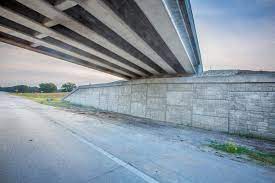Prestressed concrete slabs are widely used in the construction industry due to their excellent strength, durability, and ability to span long distances. These slabs are designed with pre-compressed steel wires or strands, which helps to reduce the tensile stresses in the concrete and increase its load-carrying capacity. Here are some tips on how to choose the right prestressed slab for your project:
Consider the Span Length:
One of the most important factors to consider when choosing a prestressed slab is the span length. The longer the span, the greater the amount of prestressing force required to support the load. For longer spans, you may need to consider using double-T or hollow-core slabs, which have higher load-carrying capacities.
Determine the Load Capacity:
The load capacity of the prestressed slab will depend on the type of structure and the intended use of the building. For example, a warehouse or factory may require a higher load capacity than a residential building. Make sure to consult with an engineer to determine the appropriate load capacity for your project.
Consider the Floor Height:
The height of the floor can affect the design of the prestressed slab. A higher floor may require a thicker slab, which can increase the cost of materials and construction. Conversely, a lower floor may not require as much prestressing force, which can reduce the overall cost of the project.
Evaluate the Site Conditions:
The site conditions can also play a role in choosing the right prestressed slab for your project. For example, if the site has poor soil conditions, you may need to choose a slab with a higher load-carrying capacity to support the weight of the building. Additionally, if the site is located in a seismic zone, you may need to choose a slab that can withstand seismic forces.
Consider the Speed of Construction:
Prestressed slabs are often used in precast construction, which can help to reduce the construction time and costs. Consider using precast slabs if you want to speed up the construction process and reduce the overall project costs.
Evaluate the Aesthetics:
Prestressed slabs are available in a range of finishes, including exposed aggregate, polished, and colored finishes. Consider the aesthetics of your project when choosing the right finish for your slab.
Assess the Environmental Impact:
Finally, consider the environmental impact of your project when choosing the right prestressed slab. Choose a supplier that uses sustainable materials and manufacturing processes to reduce the carbon footprint of your project.
In conclusion, choosing the right prestressed slab for your project requires careful consideration of several factors, including the span length, load capacity, floor height, site conditions, construction speed, aesthetics, and environmental impact. Work closely with an experienced engineer and supplier to ensure that you choose the right slab for your project and achieve the desired results.

